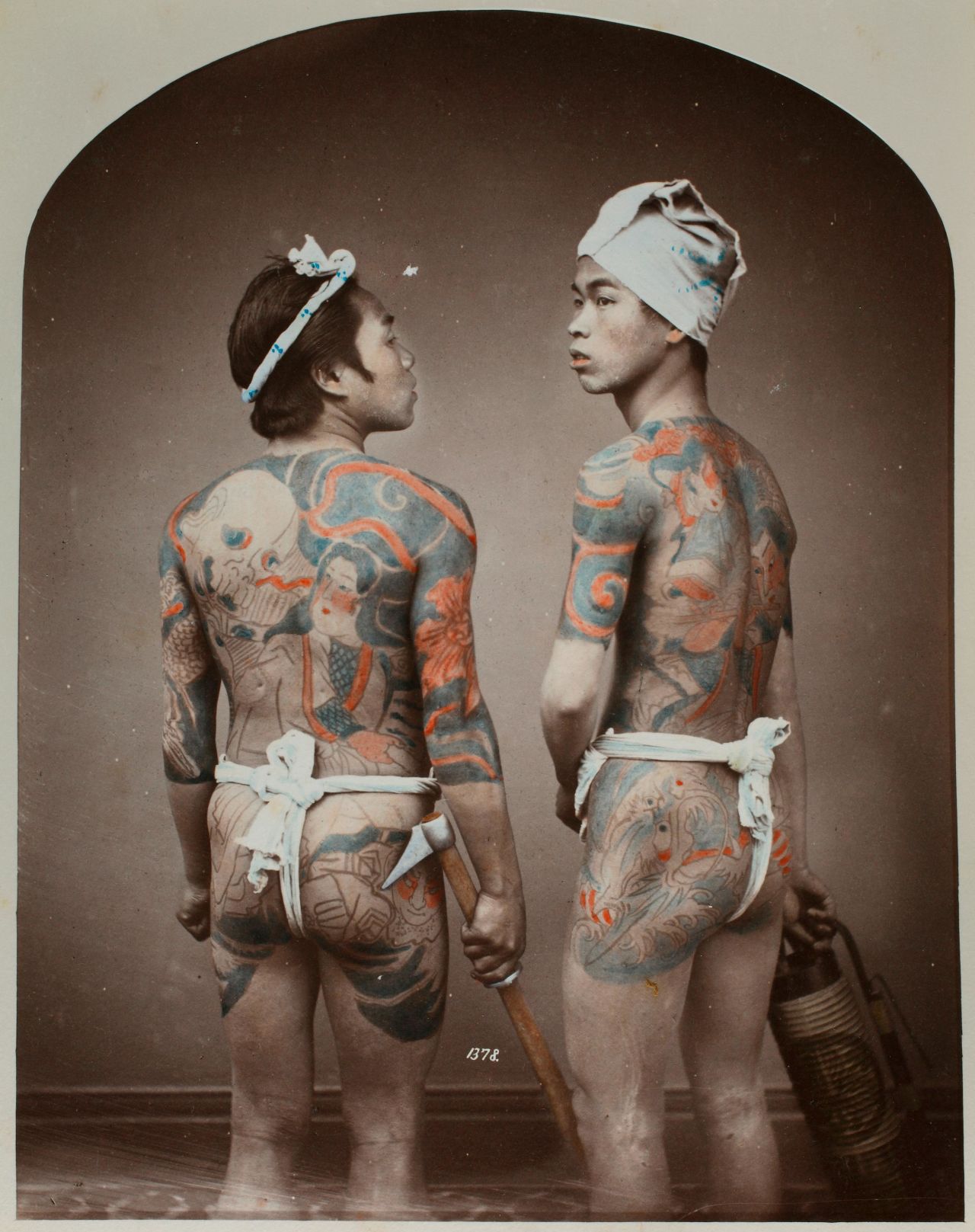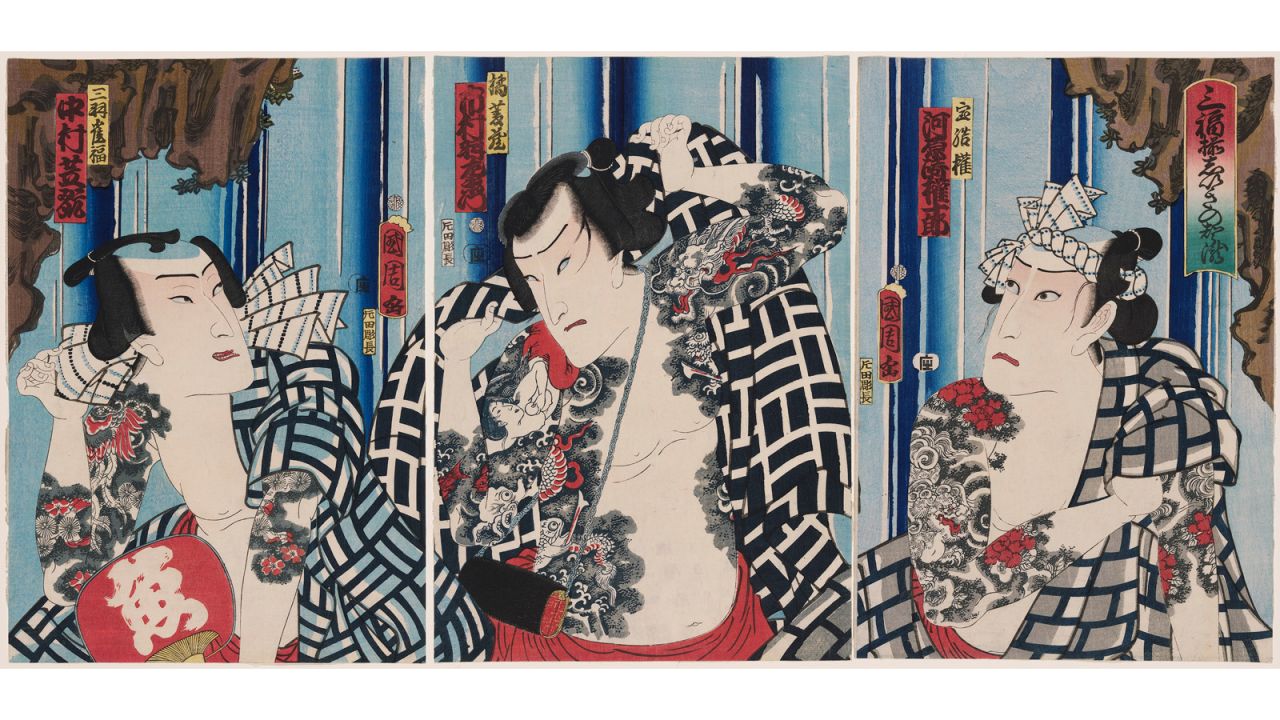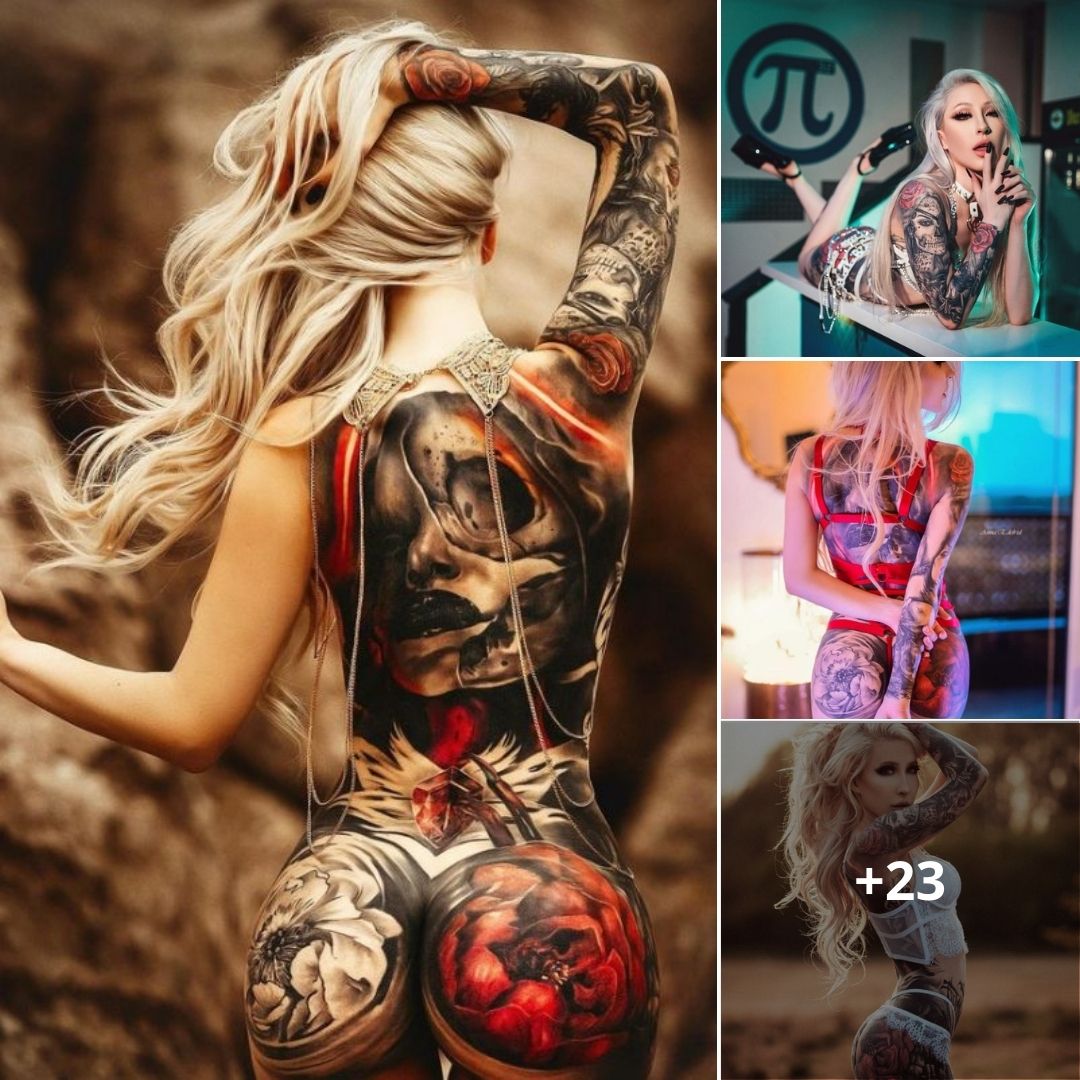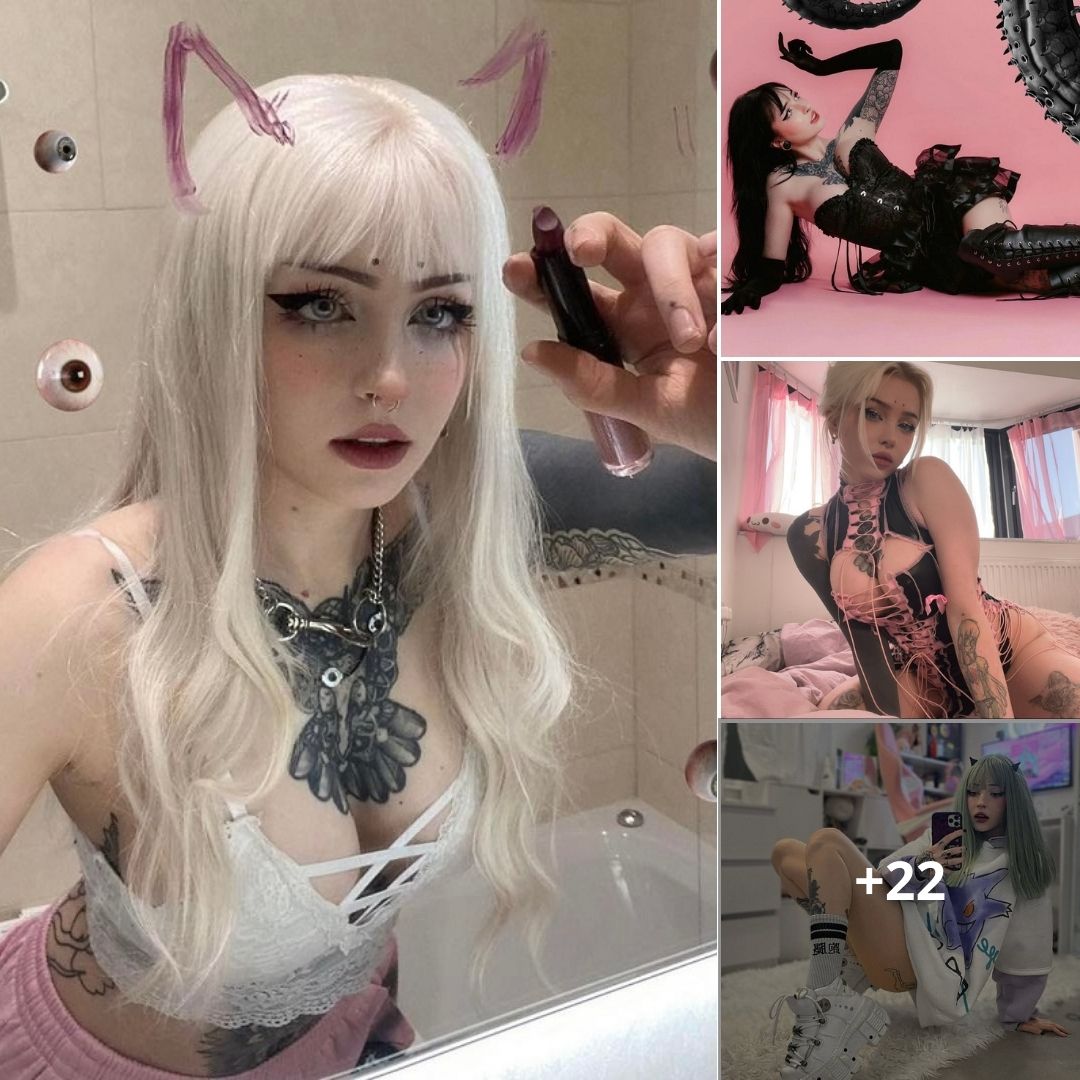At a small, clinically-lit studio in Tokyo’s Roppongi district, fearsome warriors and mythical creatures glare out from paper drawings lining the perimeter of the space.
The tattooist here, who asked to be identified simply as Ryugen, specializes in traditional Japanese imagery – colorful, cartoon-like forms inspired by nature, religious iconography and the country’s famous “ukiyo-e” wood block prints.
Ryugen’s methods are also steeped in history. In fact, he is one of a small number of Japanese artists still practicing the ancient tradition of “tebori” (literally “hand-carved”) tattoos.
The first written records of tattoos in Japan are more than two millennia old, and the use of needle-tipped rods like Ryugen’s can be traced back centuries. The tools of tebori may appear primitive compared to modern tattoo machines, but the principle was much the same: Artists used the rods to manually push ink beneath the top layers of skin, leaving a permanent mark for either decoration or punishment.

Ryugen’s instruments, which he keeps in a simple fabric pouch, differ little from these centuries-old tools, although he uses disposable needle tips for the sake of hygiene. Demonstrating his technique, he rests one of the rods along the crease of his thumb before moving it in a repetitive, vigorous action – a sort of digging motion.
Modern tattoo machines feature a depth setting, which helps the artist pierce the correct layers of skin, but tebori masters rely on feeling alone. Ryugen said the traditional method helps him to tattoo “intuitively,” although he usually uses a tattoo gun to draw outlines.
The benefit, he claimed, is that colors are brighter, stronger and longer-lasting. Manual methods also help him to create smoother gradations, from dull to strong colors, using only one ink.
Deciphering the hidden meanings of Japanese tattoos
And while his technique may look brutish, Ryugen believes it’s “way less painful” than the electronic equivalent. One of his clients, 34-year-old Ryota Sakai, agreed – though he noted that traditional tattoos take longer, and therefore cost more (Ryugen, like most tattoo artists, charges by the hour).

Sakai has tebori tattoos on his arms and chest, as well as a three-eyed Buddha across his back. His motivation for choosing traditional methods was only partly to do with Ryugen’s ability to express subtle shades.
“From a young age, I was interested in history.” he said a phone interview. “And I particularly like the Edo period, which was when these tattoo design was developed.
“I’m not religious, but I like the designs of Buddhism, the Edo period and samurai.”
Tradition under threatVideo Ad FeedbackThe artisans keeping Japan’s woodblock print tradition alive02:07 – Source: CNN
Ryugen is as much a craftsman as an artist. Like many tradespeople in Japan, his career began with a lengthy apprenticeship.
After shadowing his master for a year, Ryugen went professional and began accompanying him on visits to clients from Japan’s mafia, the Yakuza. It would take another seven years of study before he felt ready to open his own studio in the early 2000s.
Powerful portraits show the last of Nagaland’s tattooed headhunters
“It takes a longer time to master than (using a tattoo) machine,” he said. “I think it is because there are many parameters, such as angle, speed, strength, timing and intervals between ‘pokes.’ You need to control all of them.”
His craft appears to be one under threat. Although social attitudes toward tattoos have loosened in recent decades, Ryugen said that interest in tebori tattoos is limited. He estimates that 70% of clients are foreigners, and even his apprentice is American.

“Most Japanese (people) don’t care about how it’s done – whether by machine or tebori,” he said. “It’s more to do with the design or artist’s s𝓀𝒾𝓁𝓁.”
Japanese people are also less interested in traditional styles, according to Mieko Yamada, a sociology professor at Purdue University Fort Wayne who has studied Japanese body art.
“Laypeople – students, or office workers – prefer to have a contemporary Westernized styles, and at a smaller scale,” she said in a phone interview, referring to the Japanese tradition of covering large portions of the body in tattoos.
But there’s another threat to Ryugen’s profession: the law. Tattoo artists have existed in a legal gray area since 2001, when Japan’s Ministry of Health, Labour and Welfare decreed that any action that involves putting “pigment on a needle tip and inserting ink into the skin” should be considered a medical procedure.
Fascinating photos offer a rare look at Japan’s past
Without medical degrees, practically every tattooist the country suddenly found themselves operating illegally. Crackdowns have since occurred, with fines of up to 300,000 yen ($2,600) reportedly handed out to transgressors.
Tattoo studios are, nonetheless, widely tolerated. Ryugen is easy to find online, although his studio is appointment-only and, from the outside, no different from any other apartment. He called for a pragmatic solution to the industry’s precarious status.
“We need rules around tattoos (but why not) a licensing system, like in America or Europe?”
Ongoing taboos
Japan has a complex and troubled relationship with tattoos. But despite the long history of tattooing in the country, it wasn’t until the middle of the 18th century that pictorial themes emerged – ones still used by tattooists today, such as theater masks and religious figures.

Body art became increasingly popular among the lower classes until 1868, when tattoos were outlawed by the new government, which, in its drive for modernization, made efforts to banish practices that might be viewed as primitive by outsiders.
The Japanese “demon of painting” who invented manga in 1874
The ban was lifted after World War II. But tattoos are still considered taboo, having grown to be associated with organized crime. (When Ryugen was younger, around half of his clients were from the Yakuza, though he now refuses to work with the mafia.)
“People in Japan nowadays seem to be more tolerant towards people with tattoos because of musicians, basketball players – professionals who have tattoos,” Yamada said. “But if people have any visible tattoo they can be really afraid of getting fired from their job. So they tend to hide them.”
To this day, many public baths and gyms in Japan forbid visible tattoos. Yet, while this conservatism applies to all forms of tattoo, Ryugen believes that hygiene concerns attach additional stigma to the antiquated tebori method.
“The way I do it is the same as a machine,” he said. “The needles are disposable and I wear gloves. But people think that tebori is dirty, or not safe, because it’s very primitive.”
For now, the best he can do is raise awareness of his industry’s plight. On a ledge in his studio, a small box containing a handful of coins calls for donations alongside the simple message: “Save tattooing in Japan.”





